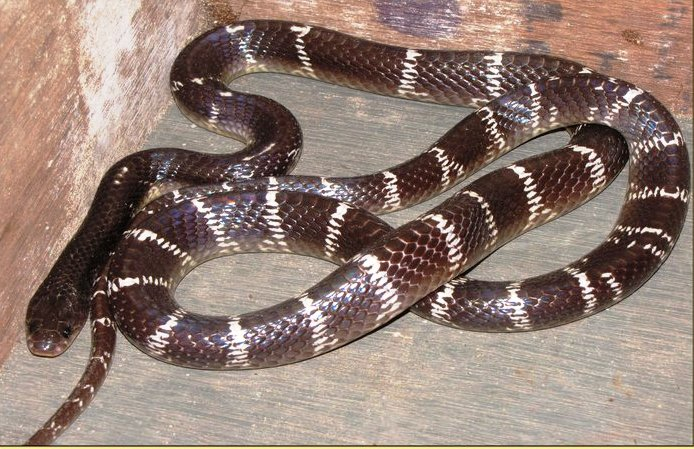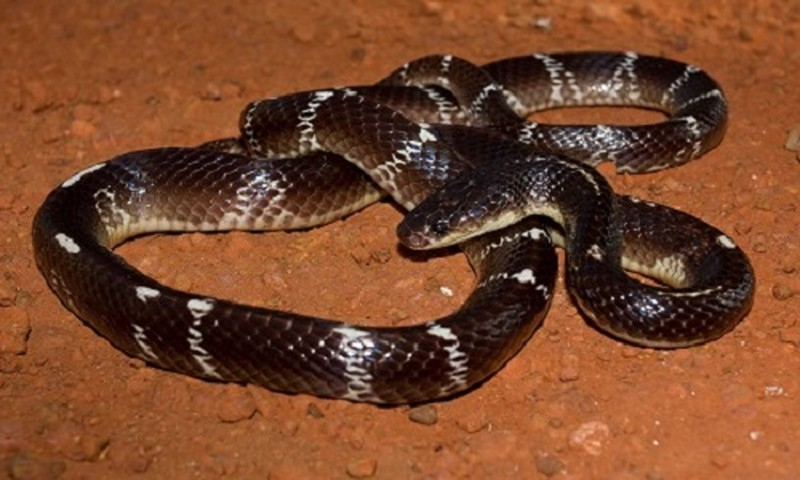Common krait
One of the most dangerous animals in India is the Common krait. The highly venomous common krait, commonly referred to as the Bengali krait, is a species of snake that is native to the Indian subcontinent and belongs to the genus Bungarus. It is one of the "Big Four" snake species that are responsible for the majority of human snakebite cases in Pakistan, India, and Bangladesh.
The common krait can reach a maximum length of 1.75 m, although its typical length is 0.9 m. Males have substantially larger tails than females and are longer overall. The neck hardly stands out, and the skull is flat. The cylindrical body has a tail that tapers off. The tail is rounded and short. The eyes are barely distinguishable in real life due to their small size and rounded pupils. The lower lip margin has four shields along it, and the third and fourth supraoculars touch the eye. The head shields are typical and devoid of loreals. The vertebral row is noticeably larger and hexagonal, and the scales are highly polished, arranged in 15–17 rows. Caudals are complete, numbering 37–50, and ventrals range from 185-225.
Apply pressure to the place that has been bitten to keep it immobile if you have been bitten by a common krait. Go to the hospital very enough, even if it doesn't hurt. They can be found in a variety of environments, including homes with secret nooks and rainforests. Indian kraits are famous for devouring smaller kraits.













